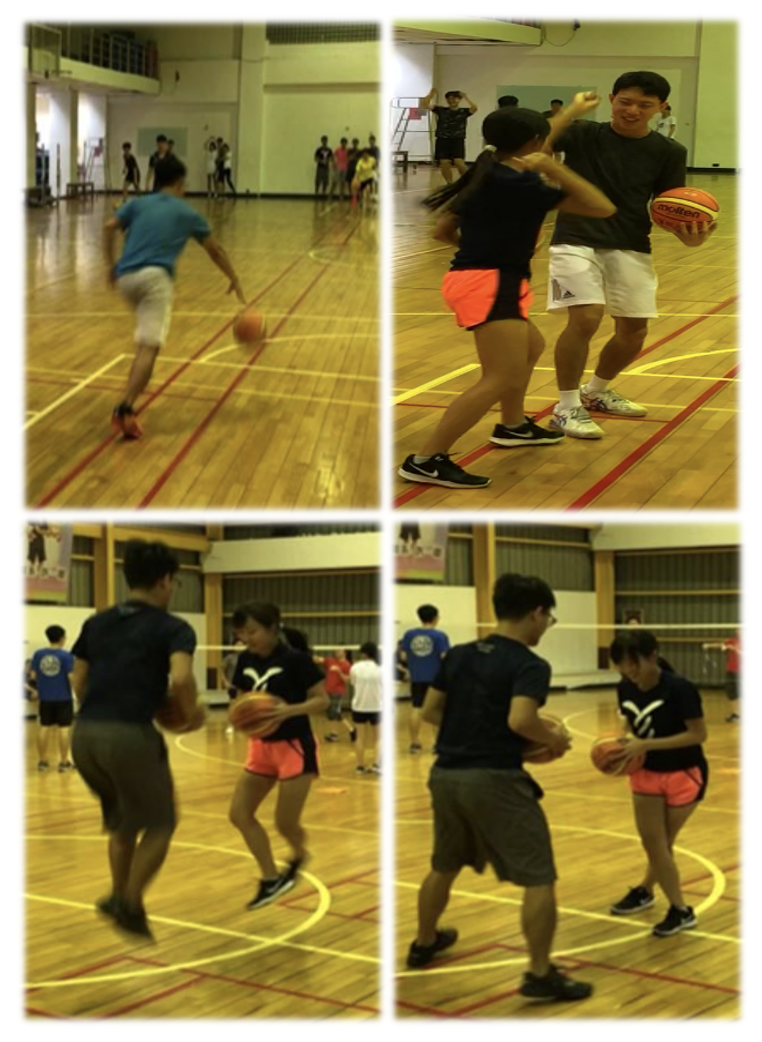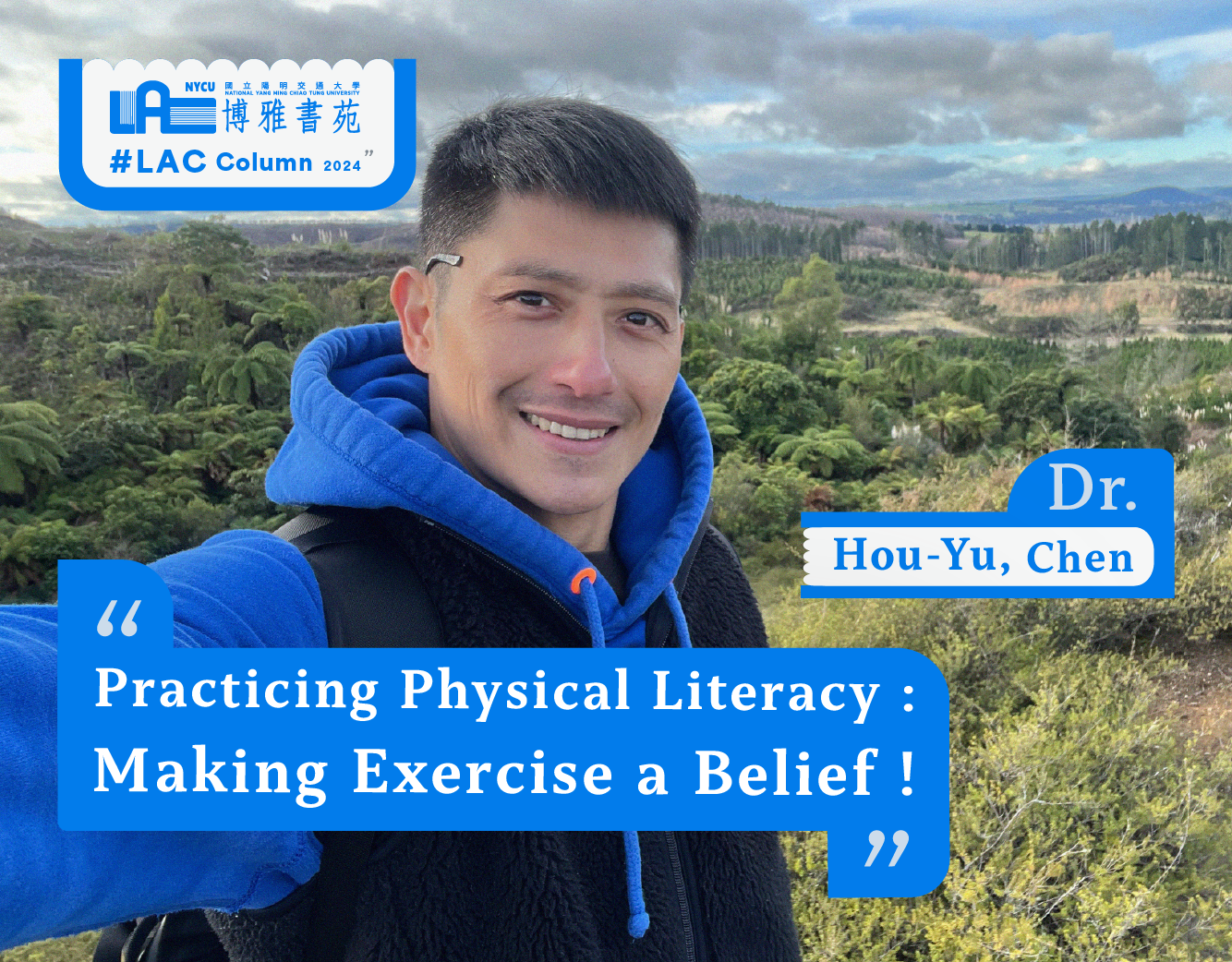- Home
- LAC COLUMN
- Practicing Physical Literacy: Making Exercise a Belief! - Hou-Yu, Chen
Practicing Physical Literacy: Making Exercise a Belief! - Hou-Yu, Chen
Practicing Physical Literacy: Making Exercise a Belief!
In 2012, the World Health Organization (WHO) pointed out that insufficient physical activity is the fourth leading risk factor for global mortality. The American College of Sports Medicine (ACSM) also stated in 2018 that regular exercise has been proven to reduce cancer risk by 12% to 28%. This shows that exercise is crucial in promoting overall health, a widely accepted notion.
However, what are the exercise habits of the domestic population? According to the 2023 statistics from the Ministry of Education's Sports Administration, only about 35% of the population has regular exercise habits. When divided by age groups—students (ages 13-24), working adults (ages 30-59), and retirees (ages 65 and above)—the retiree group has the highest proportion of regular exercise, followed by students while working adults come in last. This suggests that exercise and health promotion become more critical as people age, leading retirees to engage more actively. Students, full of energy, may participate in extracurricular activities in addition to physical education classes, maintaining a degree of exercise participation. However, working adults are often too busy with their careers and family responsibilities, making it challenging to find time for exercise. As a physical education educator, after observing these statistics, I am convinced that teachers play a critical role in promoting physical literacy to inspire more students to prioritize exercise.
In physical education classrooms, traditional teaching, which focuses on improving "sports skills," seems to remain the preferred approach for many teachers. This results in physical education classes resembling specialized training for school teams or athletes. For students with little prior experience, this can lead to frustration and boredom. I believe that sports skills should first be transformed into creative and fun games in physical education, allowing students to enter the sports environment and explore rules, tactics, and strategies through exploration and thought. Developing cognitive and affective objectives early in the course makes it easier to ignite students' interest and motivation for learning. This teaching method is called Teaching Games for Understanding (TGFU).

Illustration: Designing a fun basketball game lesson: Dribbling rock-paper-scissors (win/lose) for offense/defense passing
Physical education teachers are like "can openers," inspiring students' intrinsic motivation to participate in PE classes actively and taking advantage of the competitive nature of games by organizing group discussions on tactics and strategies in the sports setting. Students assess the performance after each phase (round) and reflect and share their experiences post-competition, fostering a high-quality learning and interaction process. This shift from traditional skill-based teaching to a cognitive and affective-oriented teaching environment easily leads students to appreciate the unique charm of physical education. More importantly, it conveys the core concepts of physical education literacy: 1) voluntary participation, 2) appropriate communication and interaction, and 3) collaborative group connections. These literacies align with the philosophy of liberal arts education, which ultimately aims to cultivate lifelong participation and learning in students.
Inspiring more students to value and actively engage in sports during their school years may lead them to continue exercising after graduation, increasing participation among working adults. This, in turn, could help develop better exercise habits as they approach retirement. Let exercise become a belief, creating a win-win situation for all ages and promoting lifelong health!
In 2012, the World Health Organization (WHO) pointed out that insufficient physical activity is the fourth leading risk factor for global mortality. The American College of Sports Medicine (ACSM) also stated in 2018 that regular exercise has been proven to reduce cancer risk by 12% to 28%. This shows that exercise is crucial in promoting overall health, a widely accepted notion.
However, what are the exercise habits of the domestic population? According to the 2023 statistics from the Ministry of Education's Sports Administration, only about 35% of the population has regular exercise habits. When divided by age groups—students (ages 13-24), working adults (ages 30-59), and retirees (ages 65 and above)—the retiree group has the highest proportion of regular exercise, followed by students while working adults come in last. This suggests that exercise and health promotion become more critical as people age, leading retirees to engage more actively. Students, full of energy, may participate in extracurricular activities in addition to physical education classes, maintaining a degree of exercise participation. However, working adults are often too busy with their careers and family responsibilities, making it challenging to find time for exercise. As a physical education educator, after observing these statistics, I am convinced that teachers play a critical role in promoting physical literacy to inspire more students to prioritize exercise.
In physical education classrooms, traditional teaching, which focuses on improving "sports skills," seems to remain the preferred approach for many teachers. This results in physical education classes resembling specialized training for school teams or athletes. For students with little prior experience, this can lead to frustration and boredom. I believe that sports skills should first be transformed into creative and fun games in physical education, allowing students to enter the sports environment and explore rules, tactics, and strategies through exploration and thought. Developing cognitive and affective objectives early in the course makes it easier to ignite students' interest and motivation for learning. This teaching method is called Teaching Games for Understanding (TGFU).

Illustration: Designing a fun basketball game lesson: Dribbling rock-paper-scissors (win/lose) for offense/defense passing
Physical education teachers are like "can openers," inspiring students' intrinsic motivation to participate in PE classes actively and taking advantage of the competitive nature of games by organizing group discussions on tactics and strategies in the sports setting. Students assess the performance after each phase (round) and reflect and share their experiences post-competition, fostering a high-quality learning and interaction process. This shift from traditional skill-based teaching to a cognitive and affective-oriented teaching environment easily leads students to appreciate the unique charm of physical education. More importantly, it conveys the core concepts of physical education literacy: 1) voluntary participation, 2) appropriate communication and interaction, and 3) collaborative group connections. These literacies align with the philosophy of liberal arts education, which ultimately aims to cultivate lifelong participation and learning in students.
Inspiring more students to value and actively engage in sports during their school years may lead them to continue exercising after graduation, increasing participation among working adults. This, in turn, could help develop better exercise habits as they approach retirement. Let exercise become a belief, creating a win-win situation for all ages and promoting lifelong health!

